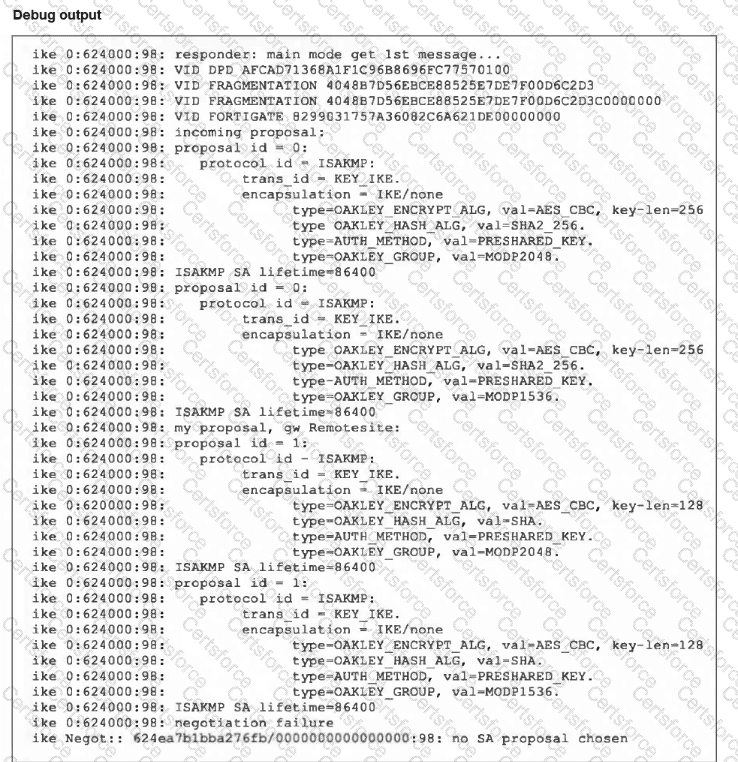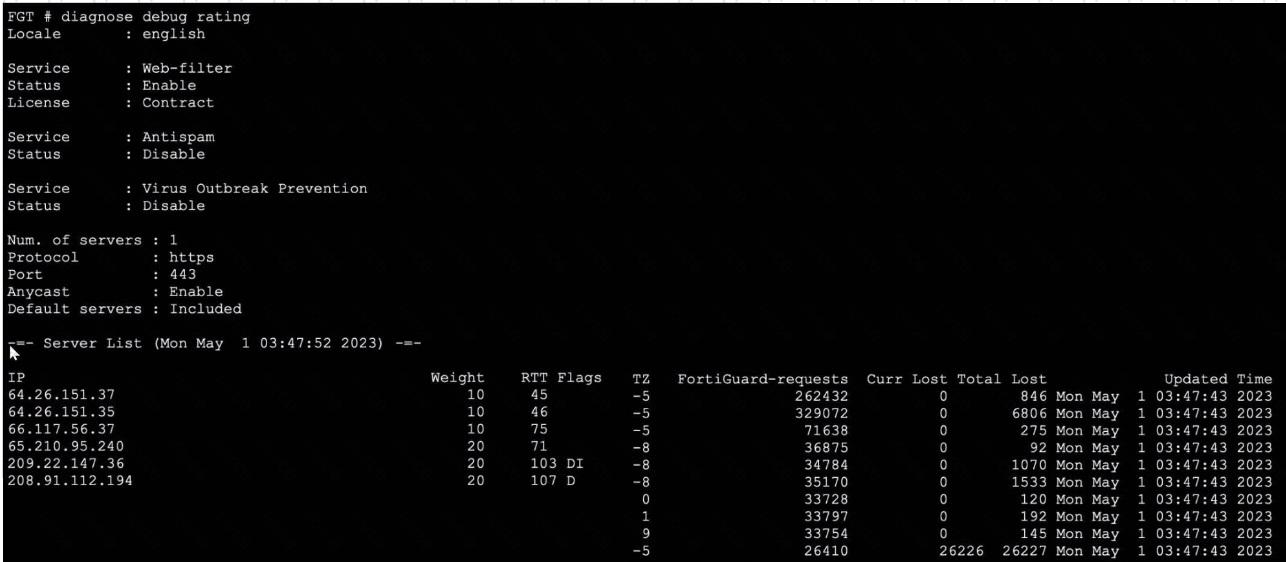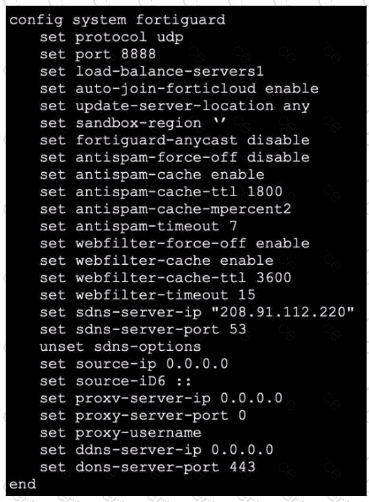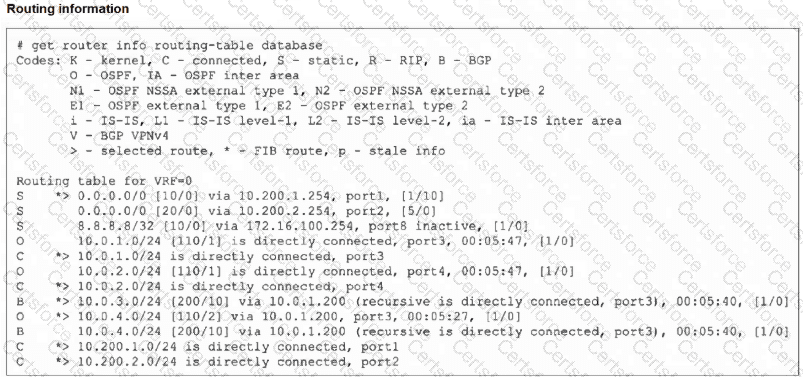Refer to the exhibit, which contains partial output from an IKE real-time debug.

The administrator does not have access to the remote gateway.
Based on the debug output, which configuration change the administrator make to the local gateway to resolve the phase 1 negotiation error?
Exhibit.

Refer to the exhibit, which shows two entries that were generated in the FSSO collector agent logs.
What three conclusions can you draw from these log entries? {Choose three.)
Refer to the exhibit, which shows the partial output of command diagnose debug rating.

In this exhibit, which FDS server will the FortiGate algorithm choose?
During which phase of IKEv2 does the Diffie-Helman key exchange take place?
Refer to the exhibit, which contains the output of diagnose vpn tunnel list.

Which command will capture ESP traffic for the VPN named DialUp_0?
Exhibit.

Refer to the exhibit, which shows the output of a diagnose command.
What can you conclude about the debug output in this scenario?
Exhibit.

Refer to the exhibit, which shows a FortiGate configuration.
An administrator is troubleshooting a web filter issue on FortiGate. The administrator has configured a web filter profile and applied it to a policy; however the web filter is not inspecting any traffic that is passing through the policy.
What must the administrator do to fix the issue?
Refer to the exhibit, which shows the modified output of the routing kernel.

Which statement is true?
Consider the scenario where the server name indication (SNI) does not match either the common name (CN) or any of the subject alternative names (SAN) in the server certificate.
Which action will FortiGate take when using the default settings for SSL certificate inspection?